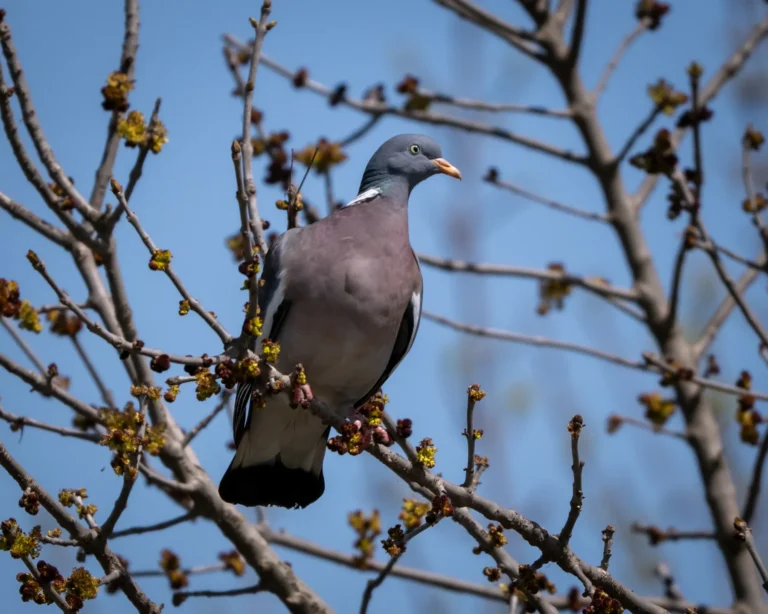
Common Wood Pigeon

Description and how to observe Common Wood Pigeon:
The Common Wood Pigeon is the largest species of wild pigeon in Europe, easily recognisable by its robust size (38-43 cm), bluish-grey plumage and, most notably, the white collar on either side of the neck, especially visible on adults. The wings are marked with a distinctive white band, clearly visible in flight. It can easily be seen in the Danube Delta, especially in wooded areas, wooded heaths, wooded pastures or even near settlements, flying slowly and heavily or sitting on high branches.
What it feeds on Common Wood Pigeon:
It is a predominantly herbivorous bird. Its diet consists of seeds, grains, berries, shoots, fruits and young leaves. Sometimes it also eats acorns or cereals from agricultural crops, which can cause conflict with farmers. It is frequently seen feeding on the ground, but also in trees, where it gathers fruit and leaves.
Threats:
The Common Wood Pigeon is not considered a threatened species, but it faces some risks, such as:
Hunting (it is a game species in Romania)
Loss of natural habitats through deforestation and urban sprawl
Collisions with electrical wires or cars
Ecological role:
More information about Columba palumbus:
The Common Wood Pigeon is a highly adaptable species and has become increasingly common in urban environments. Unlike domestic pigeons, it retains wild behaviours and still prefers green or wooded areas. It is a common presence in the delta landscape and can be seen all year round.
Discover now the most beautiful places in the Danube Delta!
In the following pages, you will find detailed information about:
- Top tourist destinations: Traditional villages, nature reserves, tourist trails and much more.
- Activities and attractions: Everything you need to know about boating, fishing, bird watching, cycling and other activities.
- Accommodation and catering: Accommodation to suit all budgets and restaurants serving traditional cuisine.




